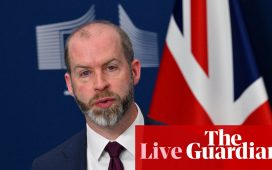
Geodrill Limited (TSE:GEO), a leading drilling company, reported a stellar financial performance in its second quarter of 2024. The company achieved record-breaking revenue of $41.2 million, marking a 26% year-over-year (YoY) increase. Net income saw a significant rise, surging 147% YoY to $4.8 million, while EBITDA climbed 72% YoY to $10.7 million. Geodrill’s strategic shift to focus on Tier 1 customers has led to improved cash flow and reduced payment issues, contributing to the solid growth expected over the next 3 to 5 years. Despite a business model shift that may result in margin compression, the company remains optimistic about maintaining year-over-year improvements.
Key Takeaways
- Geodrill reported a 26% increase in revenue YoY, reaching $41.2 million in Q2 2024.
- Net income and EBITDA significantly increased by 147% and 72% YoY, respectively.
- The company’s cash position grew by 27%, and debt was reduced by 9%.
- Investments of $2.8 million were made in upgrading drill rigs and equipment.
- Geodrill secured contracts worth over $150 million in the first half of 2024.
- Earnings per share (EPS) for Q2 stood at $0.15, with the company not expecting to reach the 2022 EPS of $0.41 again.
- The company anticipates solid growth in the coming years, despite a shift in business model and potential margin compression.
Company Outlook
- Geodrill has a positive outlook for future growth and aims to deliver increased shareholder value.
- Contracts secured in various regions support the company’s expectation for solid growth.
- Geodrill is optimistic about maintaining year-over-year improvements.
Bearish Highlights
- The company does not expect to achieve the 2022 EPS level of $0.41 in the near future.
- Margin compression is anticipated due to the shift in the company’s business model.
Bullish Highlights
- Geodrill’s shift to drilling for Tier 1 customers has improved cash flow and reduced payment issues.
- The company achieved a 26% EBITDA margin in the current quarter, considered outstanding in the industry.
- Geodrill’s rig fleet has increased to 91 operational rigs, supporting future operations.
Misses
- The company expects positive comparisons to the previous year’s quarters but not necessarily sequential quarter-over-quarter improvements.
Q&A Highlights
- Executives discussed the strategic decisions that led to the exceptional financial performance.
- The repositioning of the rig fleet out of Burkina Faso for safety reasons and the business model shift were key topics.
- The company addressed the potential for margin compression due to the new focus on Tier 1 customers.
Geodrill’s impressive Q2 performance and strategic investments, such as the $2.8 million in upgrading equipment and expanding its rig fleet, have positioned the company well for continued success. The securing of significant contracts and a strong focus on safety, with 17.5 million hours without a lost time injury, further underscore the company’s commitment to operational excellence. While Geodrill executives remain cautious about future EPS levels and acknowledge the potential for margin compression, the overall sentiment during the earnings call was one of optimism, buoyed by the company’s robust financial health and strategic positioning in the market.
Full transcript – None (GEODF) Q2 2024:
Operator: Good morning, everyone, and welcome to the Geodrill’s Q2 2024 Results Conference Call. At this time, all participants are in a listen-only mode. Following the presentation, we will conduct a question-and-answer session. And instructions will be provided at that time for you to queue up for questions. [Operator Instructions] I would like to remind everyone that this conference call is being recorded today, August 12, 2024. Before we begin, certain statements made on today’s call by management may be forward-looking in nature and as such, are subject to various risks and uncertainties. Please refer to the company’s press release and MD&A for more details on these risks and uncertainties. I would now like to turn the call over to Mr. Dave Harper, President and CEO of Geodrill’s. Please go ahead.
Dave Harper: Thank you, operator, and good morning, everyone. Thank you for joining us today to discuss Geodrill financial and operational results for the second quarter of 2024. Joining me on the call today is Greg Borsk, our CFO. Now, let’s dive into the financial highlights for the reporting period. In the second quarter, we achieved two consecutive months of record breaking revenue. Building on the momentum witnessed in the first quarter, we realized unprecedented revenue peaks firstly in May, then immediately followed by a further increase in June, both of which surpassing all previous historical benchmarks. Overall, quarter two revenue was a significant 26% year-over-year increase as well a robust 19% quarter-over-quarter improvement. Net income was an impressive year-over-year surge of 147% as well a remarkable quarter-over-quarter increase of 130%. And for EBITDA, we recorded a substantial year-over-year increase of 72% as well a 60% quarter-over-quarter improvement. Additionally noteworthy, we increased our cash position by 27% during the quarter and also reduced the company’s debt by 9%, achieving an overall debt-to-equity ratio of 8%, which underscores our dedication to maintaining a solid balance sheet position. Also importantly in the quarter, we made significant investments amounting to $2.8 million in the upgrade and maintenance of our modern fleet of drill rigs and equipment. This investment ensures that, we will continue to lead the industry with state-of-the-art equipment, ensuring us to deliver exceptional service to our clients and maintain our competitive edge. These financial decisions are a testament to our disciplined approach to managing resources and our continuous efforts to enhance shareholder value. And we are confident these actions will contribute to our sustained growth and the success of the business. Now looking at the operational highlights. We ended the quarter two with a total of 91 rigs in our operational fleet to meet on growing demand. We also reached a new safety milestone, achieving 17.5 million hours without lost time injury. Recall in the first half of 2024, we secured contracts totaling more than $150 million, which will significantly contribute to our revenues and profitability over the next three to five years. These contracts include two substantial long-term agreements with top-tier mining companies or multiple REITs. Our operations in Egypt, Chile and Peru continue to excel supported by longstanding contracts with Tier 1 mining companies and multi-year agreements. Our strategic focus with senior miners through long-term contracts is directly contributing to our goal of delivering sustainable results to our shareholders. These contracts are not only a reflection of our commitment to stability and growth, but also an affirmation of the trust placed in us by industry leaders. Moreover, growing mineral drilling market largely fueled by a strong gold price has created favorable conditions for our operations, allowing us to capitalize on the opportunities presented by the buoyant mineral drilling market. The synergies of these two factors, our strategic long-term contracts and the robust gold price market positions us exceptionally well to continue our trajectory of growth and success. I will now turn the call over to our CFO, Greg Borsk, who will review our financial performance in detail. Thank you, Greg.
Greg Borsk: Thank you, Dave. I’m pleased to report that our financial performance for the second quarter of 2024 has been exceptional. We achieved record-breaking quarterly revenue, the highest in the company’s history, which is a testament to our strategic planning and execution. The company generated revenue of $41.2 million for Q2 2024, an increase of $8.5 million or 26%, when compared to $32.6 million for Q2 2023. The gross profit for Q2 2024 was $12.7 million, being 31% of revenue compared to a gross profit of $7.8 million being 24% of revenue for Q2 2023. EBITDA for Q2 2024 was $10.7 million or 26% of revenue compared to only $6.2 million or 19% of revenue for Q2 2023. The net income for Q2 2024 was $4.8 million or $0.10 per share compared to $2 million or $0.04 per share for Q2 2023. I would also like to highlight other key financial accomplishments in the second quarter. We generated net cash from operating activities of $5.9 million, which reflects our strong operational performance and efficient cash flow management. We also increased the company’s cash by 27% over Q1 2024, while reducing total debt by 9%, ending the quarter with net cash excluding right of use liabilities of $300,000. Echoing Dave’s comments with the gold price well above $2,400 global exploration spending continues to be strong and provides strong fundamentals for the company going forward. At this point, I will turn the call back to Dave.
Dave Harper: Thank you, Greg. Our focus on securing long term contracts has provided us with a stable and predictable revenue stream, which is crucial in the cyclical business of Mineral Drilling Services. This approach has allowed us to optimize our resource allocation and operational efficiency resulting in improved profitability as evidenced by our results today. Looking ahead, we remain optimistic about the future. The demand for our services continues to grow. And with a strong foundation laid in the first half of 2024, we are confident in our ability to maintain success and deliver increased shareholder value. To this end, I would like to extend our gratitude to all our stakeholders, including our dedicated employees, our shareholders and our loyal customers for their continued support, which has been integral to our success. We are committed to maintaining our high standard of service and to furthering our position as a leader in the mineral drilling industry. This concludes our prepared remarks on our financial and operational results. I’ll then hand over to the operator, who will pass it back to listeners on the call for Q&A session.
Operator: [Operator Instructions] Your first question comes from Dave Kegler from Private Investor.
Unidentified Analyst: Good morning, Dave. Congratulations on the great results. Just a quick question. With long-term profitability looking forward are you planning on reconsidering your dividend?
Dave Harper: Yes. We will, at a point in time. We do have competing priorities at this point in time, which Greg will probably be the better person to speak to. But perhaps, I’ll just — the short answer is yes, not today.
Greg Borsk: Yes. I think one of the things we highlighted was, if you look at Q1, the company actually we invested quite significantly in the first quarter for the large contracts and in doing that, we ended Q1 with actually we were in a net debt position. We hadn’t been in a net debt position for quite a while. So one of the things we’re trying to highlight this quarter just through efficient cash management et cetera, we’ve changed that. We ended Q2 with cash of $9.7 million and debt of $9.4 million. So we actually ended Q2 with net cash. So what we’re going to do throughout the rest of the year is continue to execute, add rigs, where it makes sense, et cetera, where we have client demand. So I think just to echo what Dave said, I think right now the objective is to continue to build-up cash and pay down debt and then we will revisit the dividend at a later date.
Operator: Your next question comes from Jerry Janovich from Private Investor.
Unidentified Analyst: Thank you. Is your rig utilization still 75%? And do you think this can be maintained or even modestly improved upon?
Dave Harper: So through quarter two, utilization of the fleet reached the 75%. It actually reached slightly higher than that, but it actually averaged 72% for the quarter. Historically, I’m not sure how long you’ve been an investor or if you are in fact indeed an investor today in Geodrill. But historically, if you know anything about Geodrill, we traditionally have our strongest quarter in quarter two. What happens then is, we experience a bit of seasonality in some of the markets that we operate in. So we take that opportunity to bring the rigs and do some maintenance. And it tends to be a slower quarter through quarters three and four. So to put a comparable in there at the moment, utilization as we — as I sit here and speak before you today, is currently just hovering marginally above 60%. We’ve gone from 75% to 61%, which is expected. It’s normal. And we might — it tends to increase as we exit quarter three. It tends to improve a bit through quarter four. But then what happens is we slow down for the Christmas holiday season, and then it picks up again in quarter one. So I think today’s results were evidence of — it’s our strongest ever quarter in the history of this company. And it is a clear signal that, after a couple of underwhelming quarters that we had through 2023 for, again, competing priorities. We basically decided that we’re going to exit a couple of jurisdictions, and we did. And in doing that, well, of course, it had an effect on the business. Today’s results are, I think, clear evidence that we’re back. We’re going to be doing our best work from here going forward. But I wouldn’t, at this point in time, expect a sequential improvement over the quarter that we’ve just delivered. But you will see a solid quarters going forward. And, yeah.
Unidentified Analyst: Right. In May, you stated that your immediate short-term goal was to get back to the best of time of 2022. In that year, you earned $0.41. Is it reasonable given the backlog and visibility you have going forward that this goal could be achieved of $0.41 for this fiscal year?
Dave Harper: Sorry, is that in net earnings?
Unidentified Analyst: Yes. I believe in 2022, you earned $0.41.
Greg Borsk: Dave, let me just, I think the other thing we’ve mentioned is that we’ve morphed away from the we’ve morphed the business to be more predictable, drilling more for the majors. We announced the two significant contracts in Q1, the $150 million. So when the drilling that we’re doing now is — I don’t you’re not going to see as high margins et cetera. You’re going to see still industry leading margins. But to go back and compare to 2022, 2022 we were doing a lot of exploration drilling. And if I remember, we had one exceptional quarter that kind of skewed things. So I think where we are now, if you look at halfway through this quarter, we’re at $0.15 and we’re very comfortable with that. Q1 was weak and Q2 sorry — Q1 was extremely weak and we put in a $0.10 quarter. But to try to get back to $0.41 what we did in ‘22 we’re sitting here halfway through the year at $0.15 I don’t see it happening. But again, this is a strategic decision and it flows through not only in the earnings, it flows through in getting paid. When you’re drilling for the Tier 1 customers, the Tier 1 clients, we’re getting paid on time. That’s very important in our industry. If you look at the one of the things we disclosed is the aging of our receivables and you can see significant improvement just over December of last year in our over 90 days et cetera. So, it’s more of a stronger company, a more balanced company, drilling for Tier 1 companies et cetera. And we’re still expecting exceptional earnings and exceptional earnings per share, but I don’t think we’ll get back to $0.41.
Unidentified Analyst: All right. And my final question is just to follow-up on that. So you did $0.10 this quarter. The third and fourth quarters are traditionally, as you said, a little slower. Is it reasonable, given your visibility to expect that we get at least $0.10 for the next two quarters per share?
Greg Borsk: Is that the $0.10 between the two quarters? Is that your question like?
Unidentified Analyst: My question is could you intent says this quarter — could you intend on the third and $0.10 in fourth?
Greg Borsk: No. No. The Q2 is an exceptional quarter for us. This was a record breaking quarter. Q3, rigs come in for maintenance, etcetera. Just to be clear, this is — in the 25 years of Geodrill, Q2 has always been our strongest quarter. So we were able to earn $0.10 this quarter. We will not be able to earn $0.10 in Q3.
Unidentified Analyst: All right. Thank you and congratulations on the incredible quarter.
Dave Harper: Thanks. And if I can just add to what you began by saying that, I had said that, we’re going to get back to the best times and we will surpass our best years. I believe I may have been in fact, I’m sure I was referring to revenue top-line. So with that comment, I would stand by that comment. I believe that, this year, we will surpass all previous years. As for — I think what Greg was alluding to there was margin compression. The big thing that’s happened is that we’ve taken a strategic decision to move away from juniors and companies that are beholden to the capital markets, which were causing us a bit of angst in terms of getting paid and so on and so forth. And we’ve moved our business model to Tier 1 cash-producing gold and base metal miners. Now that has the advantages of one, we don’t struggle to get paid. Two, we’re not looking for work all the time for customers that are not sure whether they’re going to raise money or they’re not. And so, we benefit. But with that, there has to be a tradeoff. Drilling for the Tier 1 miners, there is margin compression, absolutely margin compression. But we’ve just delivered a 25%, 26% EBITDA result. I would say, that’s outstanding, probably industry leading at this point in time. I don’t know any drillers that’s out there doing 26% EBITDA at the moment.
Operator: Your next question comes from Donangelo Volpe from Beacon.
Donangelo Volpe: Hi, guys. Good morning. Thank you for taking my question and congratulations on the excellent results. First question for me is, just going to be focused on Egypt and South America. I guess, like you can see the top-line revenue increases from the contract wins announced last quarter that was in West Africa. But can you guys talk about the pipeline for Egypt and South America? Just any color there?
Dave Harper: Yes. We basically, as I said, we coming off the back of a very successful contract win that actually began in quarter three, quarter four last year. And by quarter one, we’d secured some contracts, put some contracts to bid. We’ve since added some contracts across a number of regions. And if, when you say add some color I guess, signing new contracts for us is a normal day — a normal day in the office. We’re a contracting firm. By definition, we worked contracts. But it is, if we look at historically, the last time we had a contract or similar to this one that we’ve just come through, we’d have to go back three or four years. That took us, that cadence, if you will, on the beginning of that new wave of successful, haul of contracts took us from $80 million ZIP code revenues into the 100. We entered the 100 with the 115, then we did a 138 last year because of this strategic decision to move away from one of the rescue jurisdictions that we operated in, our revenues, fell away. And so we came we came over the top. We summoned it in 2022, and then we came off in 2023. What’s happened now is that gave us the rigs and the ability to go out with the marketing department and find new work, for those rigs. Evidently, we were successful in doing that. And so what we’re witnessing now, although our Q1 was a bit slow, you’ve seen a very solid quarter two, and you’ll see robust numbers from here going forward. Now where will it take us to? That’s really the big question. At this point, rather than making wild predictions, I’ll just say that investors can expect to see solid growth for the next 3 to 5 years.
Donangelo Volpe: And then just moving over to the adjusted EBITDA margin. Yeah, this quarter was very strong at 26.7%. It’s just a slight drop compared to 2022 levels. I know you said that’s a bit, because of the shifts going towards more majors than, juniors. But can we kind of expect, close to these numbers moving forward, or was there were there some one-off items that kind of impacted this quarter more than other quarters moving forward?
Greg Borsk: No, there is not no one off items. It was just and you see it everywhere. You see we had a very healthy gross margin. We target between 25% to 30%. We actually exceeded that. The gross margin in the quarter was 31%. Our SG&A, SG&A was — we kind of budget that at about 11%, so that came in as expected. In the past, Dave referred to last year, we had some provisions we had to take, which skewed that number. So there’s nothing exceptional in this quarter other than like the top line. And then everything followed that $41.2 million in revenue, we were able to feed the margin we wanted, the gross margin we were able to keep the spending in line et cetera. So, it all fell down to the bottom line and the EBITDA where we came in at 26% EBITDA. So nothing really to report on any exceptionalities in the quarter, just a really strong quarter.
Operator: Your next question comes from George Melas from MKH Management.
George Melas: Great. Thank you. Thank you for taking my question. Quick question on the contract that you have secured in the first half of ‘24. Can you tell us about where they are from a job working perspective? And have you started to recognize revenue on these contracts? Or have you not really started them yet?
Dave Harper: No. We certainly have started them, and they are well and truly underway. And, we’ve signed contracts in Ghana, Ivory Coast, Senegal, Egypt, and Peru, and Chile, and basically all of our jurisdictions, where we’re currently operating at.
Operator: [Operator Instructions] Your next question comes from Mark Gomes from Pipeline.
Mark Gomes: Hi, Dave. Congratulations. Great work on the shift. Just to clarify from the questions that were asked five minutes ago. If we take into account your seasonality and when you have to take rigs up and down, taking that into account, would we expect going forward, as we say, the next one, three, five years, we should see continued positive comps to the year ago quarters, so taking those that seasonality into account?
Dave Harper: That is certainly the hope. That is certainly the hope. I mean, no guarantees. I mean, with notwithstanding any exogenous sort of out of the left field events, certainly, the intention would be with this large amount of multi-rig, multiyear contracts. That would certainly be the intention. Yes.
Mark Gomes: Yes. Intention was what I was looking at was…
Dave Harper: Any wild predictions, but in principle, yes.
Mark Gomes: Right. I mean, there’s nothing happening right now that would stop this current quarter that’s extraordinary in this quarter relative to what you did in this quarter last year in terms of operations, right?
Dave Harper: Correct, yes. I think we could say safely at this point in time, we’re halfway through third quarter. Are we looking at a year over year improvement? Certainly trending that way at this point in time. If you remember, quarter three last year wasn’t a bad quarter. It was okay. But it’s not going to be a sequential, it’s not going to be a quarter-over-quarter improvement because we’ve just done a record and we’re ending and entering into traditionally a quieter quarter.
Mark Gomes: How often is it?
Dave Harper: Sorry?
Mark Gomes: Yeah. I mean, that’s typical though, right?
Dave Harper: It is. It’s totally normal. But the first thing that would normally happen is, when you put out a bang it out of the park quarter, everybody says, you’re going to do that next quarter. And you got to think of it like what is topical at the moment is the 400 relay. It’s made up of some fast sectors and some fastest sectors. No four sectors are the same. Historically, we know that quarter two is our strongest quarter and we’ve just come through our quarter two. Looking, comparing it to last quarter two. Perhaps what’s more importantly is quarter two, our strongest ever quarter that we’d recorded previous to this, we’ve also exceeded by a significant margin. So it was a great result and it’s been a few quarters in coming. You’ve got to remember that, we’ve repositioned our rig fleet out of a restive region. These things — these decisions are not taken lightly and they take quite a while to put into play for them to play out from the decision to exit, which was taken basically for the reasons of safety of our workers. We took a decision that affected us through 2023. And so that gave us the opportunity to go out, find new work which we’ve done. And I think it demonstrates just how agile and fleet of foot we are when you consider that the region that we moved out of, Burkina Faso, was once our largest market. We’ve managed to actually replace that and come back with record breaking, revenues. So I think it’s a good demonstration of how fleet of foot or how agile we can be in an ever and changing, environment where the only thing that we can truly be certain, of is change itself. Now where will we go to from here from this newfound or this recently signed bunch of this contract haul, with an ever you’ve got to remember that the cash that we generate from operations always goes into increasing the fleet size. We’re now at 91 rigs. And so what will happen is we will continue to operate at 70% utilization through the strong quarters, probably 60% through the slower quarters as we are at the moment. But that’s on an ever increasing rig fleet. So I think that it would be safe to say that from here going, notwithstanding any exogenous left field type events, you can expect to see year-over-year improvements. Yeah.
Mark Gomes: Yeah. That’s what I was getting at. I mean, that question put a little cold water on the call when in actuality, you have not since 2016 put up a stronger, third quarter over a second quarter. So it’s not something that I thought anybody should expect. But, year-over-year, I mean, that’s why we have those year-over-year comparisons. That’s where as long as all else is equal, you continue to expect year-over-year comparison strength, yes?
Dave Harper: Correct. Yeah. Certainly, just the top line. Yeah. And as we’ve been open and transparent about our business model shifting from junior exploration companies beholden to the capital markets who were giving us problems getting paid to your more top tier, Tier 1 cash producing gold mines and base metals mines gives us the added advantage of not chasing money all the time, the cost of financing outstanding debtors for long periods of time. But, that comes with margin compression, and that’s normal. You would expect that on the economies of scales. But to put out the result that we just have, I’m telling you, it exceeded my expectations.
Mark Gomes: Mine as well. Thank you.
Operator: And there are no further questions at this time. I will turn the call back over to Dave Harper for closing remarks.
Dave Harper: And I have no other remarks other than wherever you are. I hope your team managed to win some nice gold medals during the recent Olympics. And thank you all for participating on today’s call. So good news, . Thanks very much. Cheers.
Operator: Ladies and gentlemen, this concludes today’s conference call. You may now disconnect. Thank you.
This article was generated with the support of AI and reviewed by an editor. For more information see our T&C.








